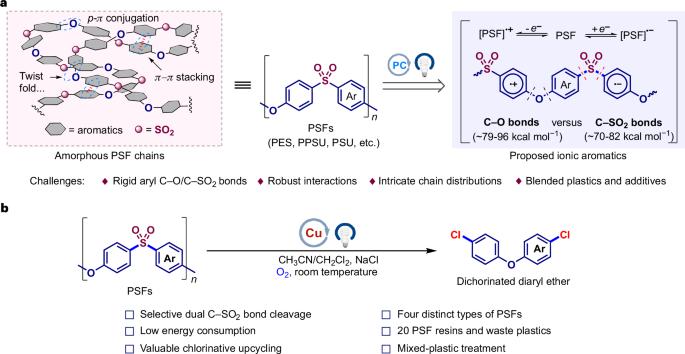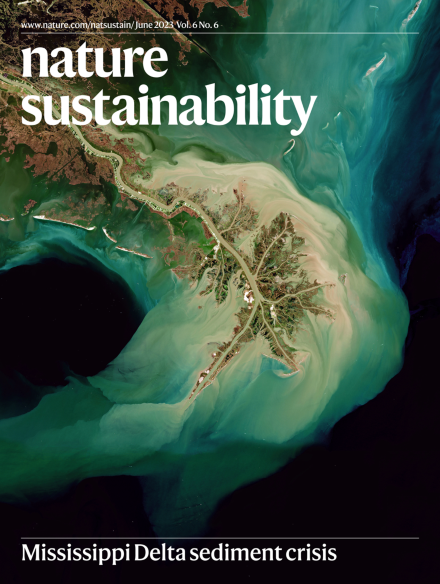Photocatalytic upcycling of polysulfones at ambient conditions
IF 27.1
1区 环境科学与生态学
Q1 ENVIRONMENTAL SCIENCES
引用次数: 0
Abstract
Chemical upcycling has the potential to turn plastic wastes into valuable chemicals and promote the circularity of plastics. Polysulfones and relevant composites are plastics with notable chemical durability, resistance and survivability. They are known as super engineering plastics, but they pose enormous challenges for reuse and upcycling. Here we develop a strategy for the chemical upcycling of polysulfones through copper-photocatalysed dual desulfonylative chlorination at ambient conditions, affording high-value-added dichlorinated diaryl ethers. The key to this strategy is cascade homolytic ipso-aromatic substitutions with high selectivity using the chlorine radical. Various types of polysulfones were successfully depolymerized and functionalized, including 12 examples of resins and eight examples of end-of-life plastics. Through gram-scale upcycling and mixed-plastic treatment, we further demonstrated the excellent compatibility and practicality of our strategy. Overall, this work establishes a viable approach for upcycling waste plastics into valuable chemicals, thus contributing to more sustainable plastic waste management and to realizing the circular economy. Despite pressure to improve the circularity of polysulfone plastic waste, upcycling polysulfones remains technically challenging. This study presents a photocatalytic method that can upcycle various polysulfones into valuable chemicals at ambient conditions.

环境条件下聚砜的光催化升级回收
化学升级回收有可能将塑料废物转化为有价值的化学物质,并促进塑料的循环利用。聚砜及其复合材料是具有显著的化学耐久性、耐化学性和生存性的塑料。它们被称为超级工程塑料,但它们对再利用和升级回收构成了巨大的挑战。在这里,我们开发了一种在环境条件下通过铜光催化双脱硫氯化对聚砜进行化学升级回收的策略,从而提供高附加值的二氯二芳醚。该策略的关键是利用氯自由基进行高选择性的级联均解对邻芳取代。各种类型的聚砜被成功地解聚和功能化,包括12个树脂和8个报废塑料的例子。通过克级升级回收和混合塑料处理,我们进一步展示了我们策略的出色兼容性和实用性。总的来说,这项工作建立了一个可行的方法,将废塑料升级为有价值的化学品,从而有助于更可持续的塑料废物管理和实现循环经济。尽管面临着提高聚砜塑料废物循环利用率的压力,但聚砜的升级回收在技术上仍然具有挑战性。本研究提出了一种光催化方法,可以在环境条件下将各种聚砜升级为有价值的化学物质。
本文章由计算机程序翻译,如有差异,请以英文原文为准。
求助全文
约1分钟内获得全文
求助全文
来源期刊

Nature Sustainability
Energy-Renewable Energy, Sustainability and the Environment
CiteScore
41.90
自引率
1.10%
发文量
159
期刊介绍:
Nature Sustainability aims to facilitate cross-disciplinary dialogues and bring together research fields that contribute to understanding how we organize our lives in a finite world and the impacts of our actions.
Nature Sustainability will not only publish fundamental research but also significant investigations into policies and solutions for ensuring human well-being now and in the future.Its ultimate goal is to address the greatest challenges of our time.
 求助内容:
求助内容: 应助结果提醒方式:
应助结果提醒方式:


